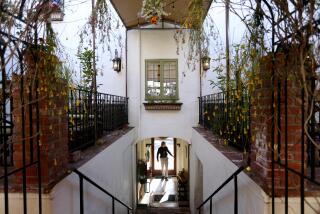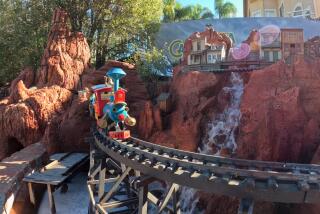Eastwood’s Crystal Cove Visit
Actor and state parks commissioner Clint Eastwood toured the Crystal Cove Historic District on Thursday as the state panel prepares to vote on restoring the beachfront colony and parkland.
Eastwood, former mayor of Carmel-by-the-Sea and advocate of coastal preservation, spent about 2 1/2 hours touring the 1920s-era cottages, walkways and other parts of Crystal Cove along with two other commissioners and a group of state parks officials
Eastwood said it wasn’t his first time at Crystal Cove, considered the last intact Southern California beach colony from that era.
While a student at Los Angeles City College in the early 1950s, Eastwood spent some of his youthful days and nights visiting spots along the Orange County coast, such as the Rendezvous Ballroom in Balboa.
A girlfriend at the time wanted to take him “to this fantastic place called Crystal Cove,” he said. “It was old then,” and with the soft ocean breeze and surf breaking in the background, it hasn’t changed much, he said.
Still, both time and weather have ravaged the 46 remaining cottages, which are in serious need of repair.
“I’ve lived in worse,” Eastwood joked.The six park commissioners will conduct a public hearing on the state’s restoration plan beginning at 9 this morning at the Radisson Newport Beach, then vote on a public use plan developed after a year of study and public hearings.
The commission makes policy recommendations to the state Department of Parks and Recreation on the development, protection and operation of its parks system.
If approved by the commissioners, the plan goes to the California Coastal Commission, probably in the spring, said Roy Stearns, deputy director of the parks department.
But the plan is a “living document,” Stearns said. “It can be massaged and changed if we think things need to be worked out a little differently.”
James Newland, a historian with the parks department, pointed out the unique challenges of restoring the cottages, which are on the National Register of Historic Places.
“It looks like they are put together piecemeal, and they are,” he said.
The challenge of preserving them is to maintain their vernacular architecture -- the way the cottages seem to have grown on the beach and into the cliffs -- and still make them usable and safe for the public, he said.
The restoration project is altogether different from another proposal that would have transformed the district into a high-priced resort where the cabins would have rented for at least $375 a night.
Public opposition to that plan prompted the state to buy out the developer’s contract and plan to make the cottages affordable to everyone.
Eastwood, appointed to a four-year term on the commission in 2001 by Gov. Gray Davis, is no stranger to thwarting big-budget developments.
He bought the Mission Ranch, a popular getaway spot in Carmel-by-the-Sea, to prevent developers from turning it into a condominium complex.
And he donated a choice 134-acre parcel along the Carmel River to the Big Sur Land Trust, stopping a planned development.
More to Read
Sign up for The Wild
We’ll help you find the best places to hike, bike and run, as well as the perfect silent spots for meditation and yoga.
You may occasionally receive promotional content from the Los Angeles Times.






